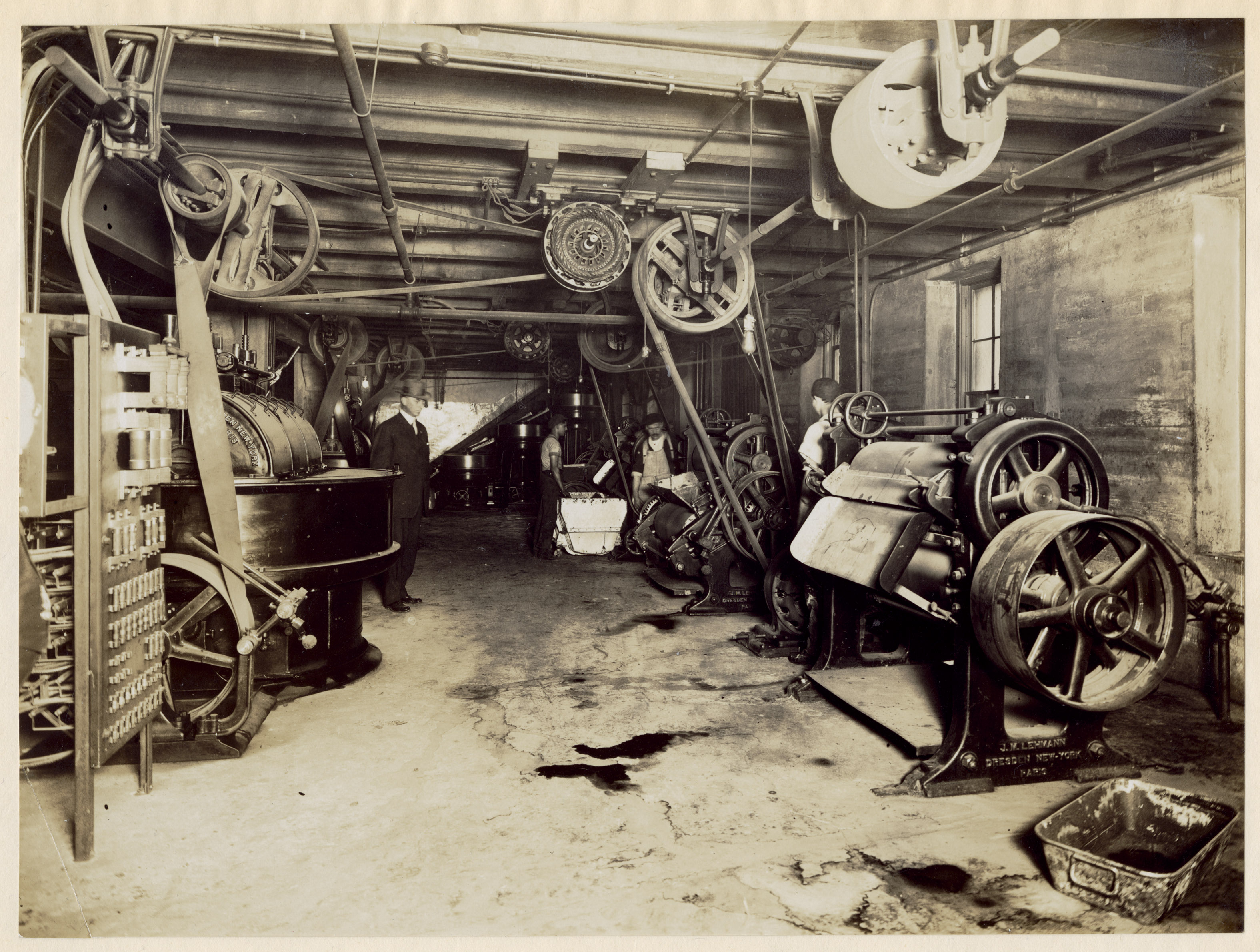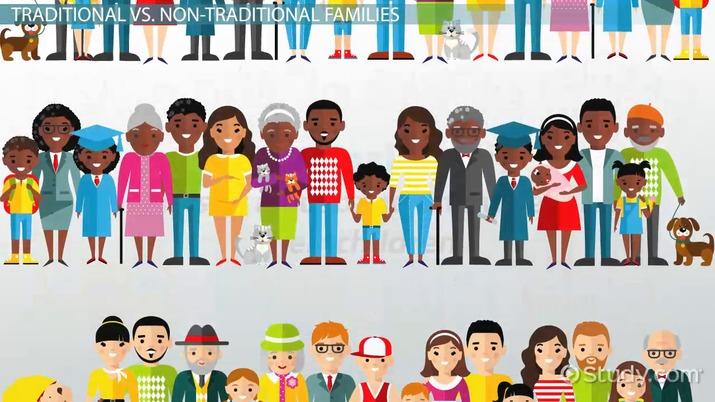Once upon a time, families were simple. There was a mom, a dad, 2.5 kids, a dog, and white picket fence. But oh, how times have changed! The evolution of family structures from the traditional nuclear unit to the modern-day kaleidoscope of step-parents, half-siblings, and fur babies is a journey that has been anything but linear. Join us as we dive into the wild world of family dynamics and discover just how much things have transformed over the years.
Evolution of Gender Roles within Families
Gender roles within families have come a long way since the caveman days. Back then, it was simple - men hunted while women gathered. But oh, how times have changed!
In modern families, gender roles are constantly evolving, sometimes making it hard to keep up. Here are some of the most notable changes:
- Household Chores: It used to be that women were solely responsible for keeping the house clean, but nowadays, men are expected to pull their weight too. It’s a miracle!
- Childcare: Dads are no longer just the fun parent - they’re expected to change diapers, attend parent-teacher conferences, and even braid their daughter’s hair. What a time to be alive!
- Emotional Labor: It used to be that women were the emotional ones in the relationship, but now men are expected to be in touch with their feelings too. Pass the tissues!
Overall, the is a good thing. It allows for more equality, understanding, and collaboration between partners. Plus, who doesn’t love seeing a man rock a vacuum cleaner or a woman fixing a leaky faucet? It’s a beautiful sight to behold!
 Industrialization on Family Dynamics”>
Industrialization on Family Dynamics”>
Impact of Industrialization on Family Dynamics
Industrialization has completely revolutionized the way families function and interact with each other. From the introduction of factory work to technological advancements, the impact on family dynamics has been undeniable.
One major change brought about by industrialization is the shift in traditional gender roles. Men were no longer the sole breadwinners, as women also entered the workforce. This led to a new dynamic within families, where both parents often work outside the home. As a result, household responsibilities are now shared more equally, with chores and childcare duties being divided between both partners.
With the rise of industrialization, families also experienced a significant decrease in quality time spent together. Long hours at work and commuting time meant less time for family bonding. As technology advanced, the introduction of smartphones and social media further distanced family members from each other, as everyone became engrossed in their own digital worlds.
Despite these challenges, industrialization has also brought about positive changes in family dynamics. Families now have access to better education, healthcare, and overall quality of life. Shared experiences of progress and development have strengthened familial bonds, as everyone strives to adapt and thrive in this rapidly changing world.
 Nuclear Family Units”>
Nuclear Family Units”>
Shift from Extended to Nuclear Family Units
With the rise of modern technology and social media, it’s no surprise that families are shifting from extended to nuclear units faster than you can say “family reunion”. But fear not, dear reader, for this shift comes with its own set of perks and quirks that are sure to keep you entertained!
First and foremost, say goodbye to those never-ending family gatherings where you’re forced to make small talk with your third cousin twice removed. Now, you can enjoy intimate dinners with just your immediate family members – no more awkward silences or forced conversations about Aunt Mildred’s knitting club!
Another advantage of the nuclear family unit is the increased sense of independence and autonomy. No longer will you have to worry about your nosy Uncle Bob snooping around in your business or offering unsolicited advice on how to raise your kids. You can now make decisions for your family without interference from extended relatives.
And let’s not forget the joy of having a smaller, tighter-knit family unit. With only your immediate family around, you can cultivate stronger relationships and create lasting memories that will stand the test of time. So embrace the , and enjoy all the benefits that come with it!

Challenges Faced by Blended Families
Blended families face a unique set of challenges that can sometimes make life feel like a never-ending episode of a reality TV show. From dealing with ex-partners to managing conflicting family dynamics, the struggles are real. Here are a few obstacles that blended families often encounter:
- Step-sibling rivalries: Just when you thought sibling rivalry was bad enough, imagine throwing step-siblings into the mix. Competition for attention, resources, and affection can reach epic proportions.
- Co-parenting drama: Coordinating schedules, parenting styles, and discipline techniques with an ex-partner can be a Herculean task. Throw in some unresolved relationship issues, and you’ve got yourself a soap opera.
- Integration woes: Bringing together two families with different traditions, values, and habits can lead to culture clashes that make the Hatfields and McCoys look like besties. Who knew that toothpaste tube squeezing preferences could cause so much strife?
Despite the challenges, blended families have a knack for finding humor in the chaos and making it work. After all, what’s life without a little drama and a lot of love? So, here’s to all the blended families out there navigating the minefield of step-parenting with grace and a healthy dose of sarcasm.

Emerging Trends in Non-Traditional Family Structures
Non-traditional family structures are all the rage nowadays, and it’s time to catch up on the latest trends in this ever-evolving landscape. Let’s take a look at some emerging trends that are shaking up the conventional notions of family.
One trend that’s gaining momentum is the rise of the “chosen family.” Who needs to be related by blood when you can pick your own family members? With the increasing acceptance of diverse relationships and lifestyles, more and more people are opting to create their own support systems with friends, roommates, and even pets.
Another trend on the rise is the “co-parenting” arrangement, where individuals decide to raise children together without being romantically involved. It’s like a platonic marriage, but with diapers and school runs. This unorthodox approach challenges the traditional nuclear family structure and emphasizes the importance of collaboration and shared responsibilities.
Finally, polyamorous relationships are pushing the boundaries of what it means to be a family. Who says you can only love one person at a time? Poly families are redefining monogamy and exploring non-exclusive partnerships that prioritize communication, consent, and lots of scheduling. It’s a juggling act, but when love is involved, anything is possible!
FAQs
Why are families no longer the traditional nuclear structure of mother, father, and children?
Well, have you seen the price of childcare these days? It’s easier and cheaper to just have grandma move in and help out!
How has the role of women within the family changed from traditional times?
Women are no longer just expected to stay at home and bake cookies all day – they are out there smashing glass ceilings and bringing home the bacon!
What impact has technology had on modern family structures?
Technology has made it easier for families to stay connected, but let’s be real – it’s also the reason everyone sits at the dinner table with their faces glued to their phones.
How have LGBTQ+ families challenged traditional family structures?
Forget the old “mother knows best” saying – in LGBTQ+ families, it’s more like “two moms or two dads means double the wisdom!”
What are some benefits of modern family structures compared to traditional ones?
Modern families are like a choose-your-own-adventure book – you can have step-siblings, half-siblings, adopted siblings, and more! Who needs boring old “first born, second born, third born” anyway?
—
In Conclusion: The Family Chronicles
And so, dear readers, we come to the end of our journey through the captivating world of family structures. From the days of yore when families were as traditional as grandma’s meatloaf recipe, to the modern era of blended families and pet goldfish as honorary siblings, one thing is clear – families sure know how to keep us on our toes!
As we bid adieu to the days of nuclear families and welcome the era of chosen families and solo living, let’s raise a toast to the ever-evolving nature of family dynamics. Whether you’re a proud member of the Brady Bunch or just your average Joe with a houseplant as your only companion, remember: family is what you make of it.
So go forth, dear readers, and may your family tree continue to grow in the most unexpected and delightful ways. And who knows, maybe one day your pet hamster will be considered a legitimate member of the family. Hey, weirder things have happened! Cheers to the transformation of family structures, and may your household be filled with love, laughter, and maybe even a little chaos.






